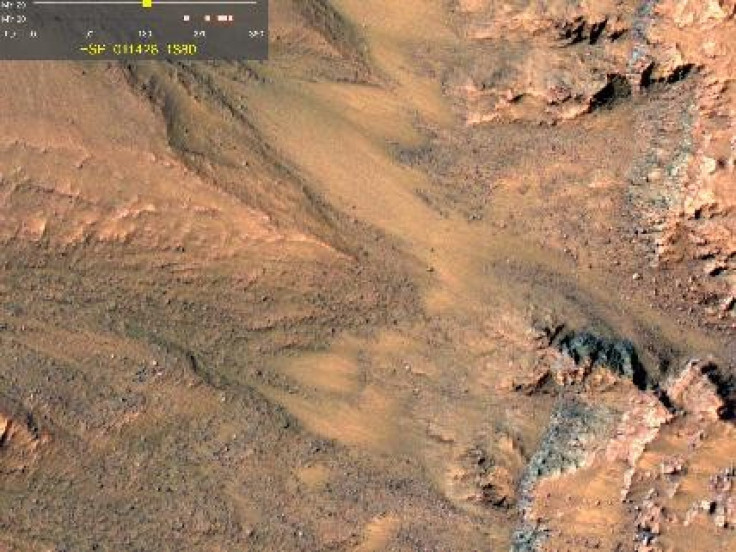Liquid Water on Mars Flows Like Syrup, But It's Salty: NASA Suggests

Mars feels closer each day to the Earth and more ideal for the future of human exploration, especially now that the Red Planet may hold salty water flowing on its surfaces, according to new evidence discovered by scientists from NASA spacecraft data.
NASA's Mars Reconnaissance Orbiter have taken high-resolution photographs of possible flowing water during the warmest months on Mars, when dark, finger-like lines are seen on some Martian slopes. In the middle latitudes of the Planet's southern hemisphere.
The mysterious lines, called "recurring slope lineae," are estimated to be between 1.6 to 16 feet wide. The size of the lineae is rather small when compared to the larger gullies on Mars. The scientists were clear to point out that the larger gullies would have required a larger quantity of water to form than what was recently discovered.
"The best explanation for these observations so far is the flow of briny water," said Alfred McEwen of the University of Arizona, Tucson. McEwen serves as the principal investigator for the camera and lead author of a report about the findings released Thursday in the journal Science.
However, evidence for water flowing in Mars remain circumstantial. "We have no direct detection of water," added McEwen.
While puzzling elements remain, flows of liquid brine fit the features' characteristics better than alternate hypotheses, says NASA. Saltiness lowers the temperature of water that would otherwise freeze. Locations where water flows actively become warm enough, even in the shallow spots, to sustain liquid water that is about as salty as Earth's oceans, while pure water would freeze at the observed temperatures.
"It's a mystery now, but I think it's a solvable mystery with further observations and laboratory experiments," McEwen said.
This is the closest scientists have gotten to finding evidence of liquid water on Mars. They have detected frozen water in many middle to high-latitude regions. However, nothing until now has suggested there is flowing water on the planet.
Finding water on mars has long been a search of NASA. If there is water, there is hope for life on the planet. The agency has been sending spacecrafts to Mars since the 1970s.
"If there were to have been life on Mars and if it evolved and adapted to this permafrost world, I think those are reasonable things that we could go look for," NASA officials said in a press conference. "If there are cold salty waters that never freeze, despite the cold frozen surrounding ground, then they simply remain active at all times, although at lower metabolic rates when the coldest temperatures occur. If the environment is one which it is liquid seasonally but pretty much freezes up solid at other times of the year, then that would have to be an organism that can go into a dormant state."
Taking the seasonality, latitude distribution and brightness into account, the supposed water would be a volatile material.
"It is more like a syrup, maybe, in how it flows," said McEwen.
McEwen and his team are hoping the NASA and the European Space Agency mission, ExoMars, will help produce more evidence in support of their discovery. The ExoMars launch in 2016 will send a probe to mars to detect trace gases in the Martian atmosphere, including water.
© Copyright IBTimes 2024. All rights reserved.











